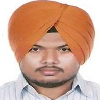
Hartej S. Dadhwal
Work place: Global Institute of Management and Emerging Technology/E.C.E, Amritsar, 143001, India
E-mail: dadhwalz@yahoo.com
Website:
Research Interests: Engineering
Biography
Hartej S Dadhwal was born in Amritsar on 16th July 1986. He completed his B.tech in Electronics and Communication Engineering in 2008 from Baba Kuma Singh Ji Engineering College, Amritsar. He has done his masters in Communication Systems in 2012 from Guru Nanak Dev University, Amritsar.
He had worked as a Lecturer in Guru Nanak Dev University Amritsar from August 2009 to June 2010. Presently, he is working as an Assistant Professor in GIMET Amritsar (Punjab Technical University) in Engineering Wing (ECE Department) started from July 2012. A total of 24 papers are published under his name.
Author Articles
Biorthogonal Wavelet Transform Using Bilateral Filter and Adaptive Histogram Equalization
By Savroop Kaur Hartej S. Dadhwal
DOI: https://doi.org/10.5815/ijisa.2015.03.05, Pub. Date: 8 Feb. 2015
Image fusion is a process of combining data from multiple sources to achieve refined or improved information for making decisions. It has many applications. When we use images with a similar acquisition time, the expected result is to obtain a fused image that retains the spatial resolution from the panchromatic image and color content from the multi-spectral image. In recent time different methods have been developed. These methods are both in spatial domain and in wavelet domain. Out of these two the wavelet domain based methods are more suitable as they are capable to handle the spatial distortion produced by the spatial domain. In this paper the proposed method is compared with principle component analysis, discrete cosine transform and also with biorthogonal wavelet transform in which bilateral filter and adaptive histogram is not present. This comparison is on the bases of different parameters. Biorthogonal wavelet transform is capable to preserve edge information and hence reducing the distortions in the fused image. It has two important properties wavelet symmetry and linear phase which are not present in spatial domain. The performance of the proposed method has been extensively tested on several pairs of multi-focus and multimodal images. Experimental results show that the proposed method improves fusion quality by reducing loss of significant information available in individual images.
[...] Read more.Other Articles
Subscribe to receive issue release notifications and newsletters from MECS Press journals